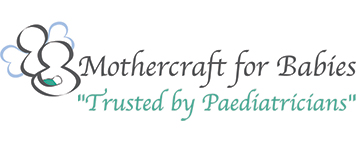Recently I was fortunate to be on a safari observing a lioness stalk a water buffalo and its one-day old calf. Here in the wild, the calf’s life was completely in her mother’s hands. It was clear what a huge sense of responsibility it was for the mother buffalo and the importance of her never dropping her guard. It reminded me that humans are also primed to be protective, alert and ready to face any threat in this postnatal period.
Sometimes this biological and necessary hyper vigilance can present as overwhelming, all consuming and distressing when in fact there is really no imminent danger. There is no lioness lurking around the corner. This is what we call Postnatal Anxiety, which is under the umbrella of Perinatal Mood Disorder, occurring in at least 10 percent of women. In my experience in my clinical practice such a presentation seems more common than the mum who is depressed, although these symptoms can go hand in hand.
The anxiety can take many forms. The worry can be predominant, preoccupying and often accompanying difficulty with sleep. Physical symptoms of anxiety can be so intense, sometimes leading to panic. There can be obsessive-compulsive behaviour and thoughts, which can be intrusive and frightening. For example being afraid one might harm one’s baby, or repeatedly checking if the baby is breathing. The baby’s sleep can be a fixation for the mum with mums describing a knot in their stomach when baby goes down. There could also be avoidance as the fear of going out or being alone with baby gets in the way.
In addition to the previously mentioned bias to anxiety at this time, we know that there are certain risk factors that would make a mother more vulnerable. (We mustn’t forget fathers can be anxious and depressed too). These influences include being someone who tends to worry, perhaps being accustomed to replaying conversations, imagining the worst-case scenario, or being up at night ruminating before a big work deadline.
Perfectionism can also be problematic, as when one has rigid expectations about how things should be, these are likely not to be met. This relates to not only how the baby would be, but also even the birth experience, the success of breastfeeding or the way one’s life is going to be when the baby comes. The tendency to believe there is only one way that things should be is likely to feed into anxiety. If the baby isn’t doing what the books say or as suggested by others, it can often lead to spiralling worry.
In addition, having a difficult and stressful pregnancy can contribute to anxiety. In fact often the anxiety begins prenatally. A traumatic labour or a baby having health issues can also make it a shaky start to motherhood. Let’s not forget the relevance of that phrase it “takes a village to raise a child”. Without much support the task of raising a baby is huge and not as nature intended. A woman is not supposed to be with her baby 24/7 and a break is often beneficial for the mother and baby. It is also important to consider if one has a family member, especially a parent who struggles with anxiety in some form. There may be a genetic vulnerability, with some clear messages about the world being a dangerous place having been heard growing up.
So the good news is that in the midst of this stressful experience, is an opportunity to change and recovery is very likely. There is indeed a place at times for antidepressants, which can improve functioning especially when sleep disturbances and elevated anxiety symptoms occur. They are in fact not addictive and need to be seen as part of a 6 month to one-year plan. Psychological input is extremely effective in addressing the anxiety.
Having an opportunity to manage these anxieties in an individual or group context with an experienced clinician can be most helpful. Exercise and nutrition also have a part to play, as ways of reducing anxiety.
Reaching out and not feeling shame around some often frightening thoughts, feelings and symptoms can be a turning point in putting a plan in place. Reminding oneself that although this is a time of vulnerability and unpredictability, it is not necessary to feel that
danger is around the corner. Oh, and the water buffalo was fine, his mum scared the lioness away.
Helpful websites:

